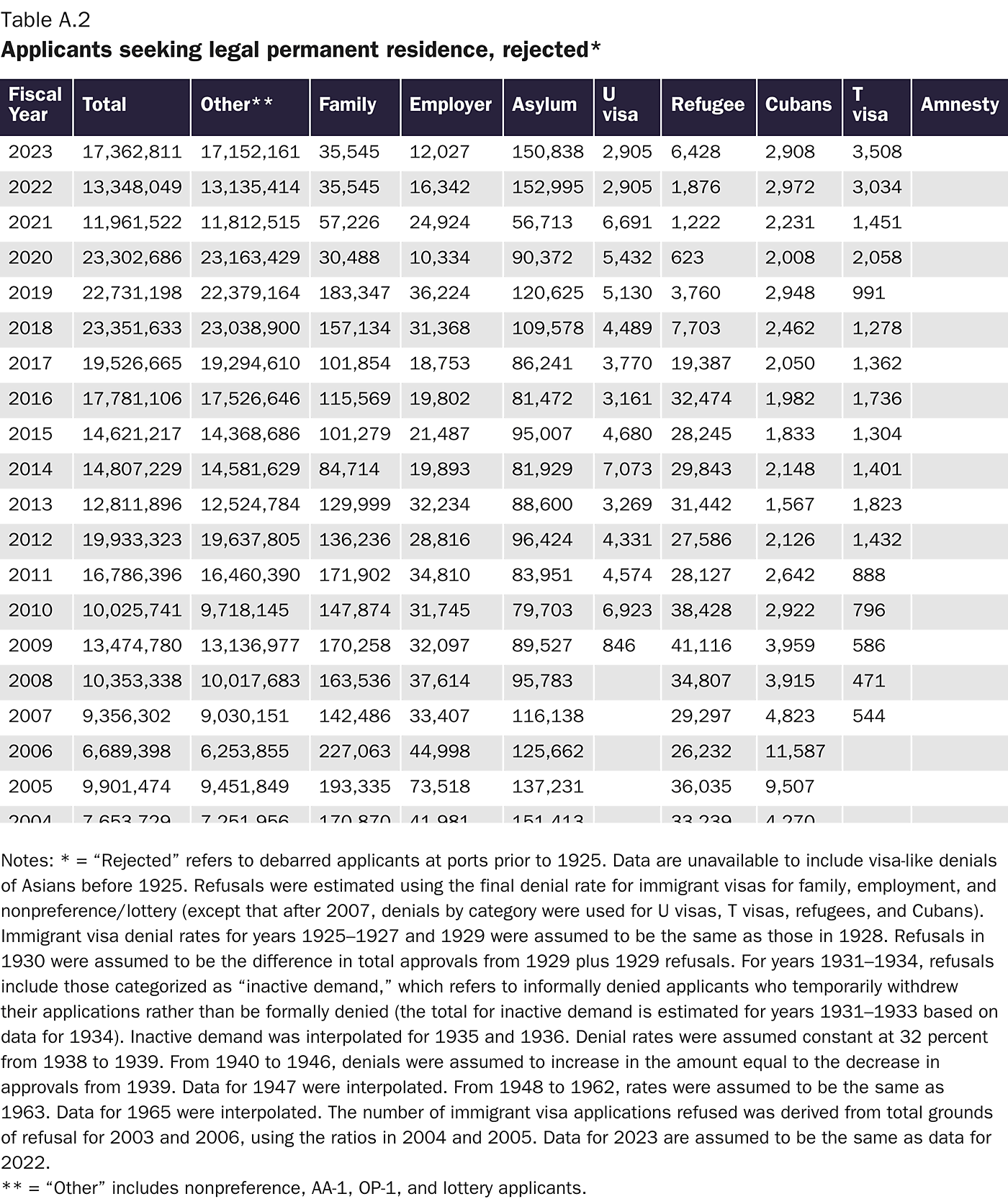1. Regulations Prescribed for the Use of the Consular Service of the United States (Washington: Government Printing Office, 1896).
2. Immigration Act of 1924, Pub. L. No. 68–139, § 23, 43 Stat. 153 (May 26, 1924).
3. Richard Bretman and Alan M. Kraut, American Refugee Policy and European Jewry, 1933–1945 (Bloomington: Indiana University Press, January 22, 1988), p. 47.
4. Ronald Freedman and Amos H. Hawley, “Unemployment and Migration in the Depression (1930–1935),” Journal of the American Statistical Association 44, no. 246 (June 1949): 260–72.
5. The Immigration Work of the Department of State and Its Consular Officers (Washington: Government Printing Office, 1935), p. 63.
6. The Department of State Bulletin: Volume V, Numbers 106–134, July 5–December 27, 1941 (Washington: Government Printing Office, 1942), p. 100.
7. The Immigration and Naturalization Systems of the United States: Report of the Committee on the Judiciary Pursuant to S. Res. 137, S. Rep. No. 81–1515 (Washington: Government Printing Office, 1950), p. 892.
8. David J. Bier, “Deregulating Legal Immigration: A Blueprint for Agency Action,” Cato Institute, December 18, 2020.
9. David J. Bier, “8.3 Million Relatives of US Citizens & Legal Residents Awaited Green Cards in 2022,” Cato at Liberty (blog), Cato Institute, May 17, 2023.
10. David J. Bier, “1.8 Million in Employment-Based Green Card Backlog,” Cato at Liberty (blog), Cato Institute, August 29, 2023.
11. Zolan Kanno-Youngs and Miriam Jordan, “‘They Forgot about Us’: Inside the Wait for Refugee Status,” New York Times, October 19, 2022.
12. “New Classification for Victims of Criminal Activity; Eligibility for ‘U’ Nonimmigrant Status,” 72 Fed. Reg. 53014 (September 17, 2007).
13. Given that the overwhelming majority are diversity- and family-sponsored immigrants: David J. Bier, “Family & Diversity Immigrants Are Far Better Educated than US-Born Americans,” Cato at Liberty (blog), Cato Institute, January 25, 2018. See also, Michael Clemens and Jimmy Graham, “How the Trump Administration’s Plan Would Shape the Composition of Immigration: First Numerical Estimates,” Center for Global Development, January 30, 2018.
14. David J. Bier, Unlocking America’s Potential: How Immigration Fuels Economic Growth and Our Competitive Advantage, testimony before the Senate Committee on the Budget, 118th Cong., 1st sess., September 13, 2023.
15. Bureau of Labor Statistics, “Civilian Labor Force Level,” Federal Reserve Economic Data, Federal Reserve Bank of St. Louis, updated November 29, 2023.
16. David J. Bier, “US Immigration Policy Lags behind a Globalizing World,” Globalization: Then and Now, Cato Institute, September 4, 2023.
17. David J. Bier, “New Data: Immigrant Population Is 2 Million below 2017 Census Projections,” Cato at Liberty (blog), Cato Institute, September 21, 2023.
18. 2022 Yearbook of Immigration Statistics, (Washington: Office of Homeland Security Statistics, Department of Homeland Security, November 2023).
19. “Enforcement Lifecycle Reports,” Office of Homeland Security Statistics, Department of Homeland Security, last updated November 20, 2023; and David J. Bier, “Title 42 Failed. It Should Not Be Extended in Any Form,” Cato at Liberty (blog), Cato Institute, May 10, 2023.
20. “Entry/Exit Overstay Report,” Department of Homeland Security, last updated January 5, 2022.
21. “Immigrants Make Up the Largest Share of the Population in over 150 Years and Continue to Shape Who We Are as Canadians,” Statistics Canada, October 26, 2022.

















